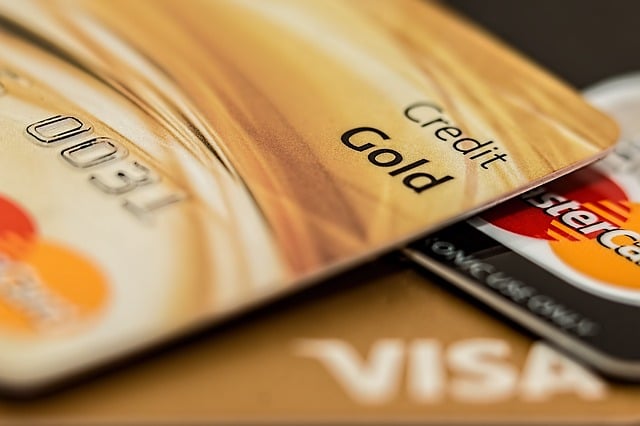A Beginner’s Guide to Borrowing Wisely
Credit involves borrowing money with a promise to repay it, often formalized in a promissory note. As a negotiable instrument, this promise can be sold to a new owner, or holder in due course, who has the legal right to collect the debt. Understanding these rules is essential for navigating the many forms of credit, from credit cards to mortgages, and using them wisely.
The Two Sides of Credit: Benefits and Costs
Why Businesses Extend Credit
The primary reason businesses extend credit is to make a profit. They are not simply giving away money; they are selling a financial product. The main costs they face when lending money (costs associated with the extension of credit) are the risk that borrowers won’t pay it back (default) and the operational costs of managing loans. To cover these risks and earn a profit, they charge interest and fees.
Benefits for the Borrower
- Convenience: The ability to pay for goods and services without carrying cash.
- Large Purchases: It allows you to finance major items like a car or education that would be difficult to pay for all at once.
- Building Credit History: Responsible borrowing builds a positive credit history, which is essential for getting better interest rates on future loans.
- Emergencies: Credit can be a crucial safety net for unexpected expenses.
Costs for the Borrower
- Interest (APR): The Annual Percentage Rate (APR) is the price you pay for borrowing money.
- Fees: These can include annual fees for having a card, late fees for missed payments, and other service charges like balance transfer fees.
Mismanaging these costs can lead to a cycle of debt that is difficult to escape.
Basic Credit Terms
Before diving into how the pieces work together, you need to understand the basic terms that are used when speaking about credit.
Principal
The loan principal is the amount of money you borrow. You’re expected to re-pay the principal plus any interest fees or loan charges.
Interest Rate
The interest rate is how much you’re charged for the right to use borrowed money. The number is expressed as an annual interest rate (percentage).
Credit Limit
Your credit limit is the total amount you’re allowed to borrow. This is set by the lender based on your ability to repay the loan.
Grace Period
The grace period represents the time between when you borrow money and when interest begins to be charged on the principal.
Minimum Payment
The minimum payment is the smallest amount you can pay each month before your credit card company considers you defaulting on your loan. This minimum payment is based on a percentage of your total principal balance.
How Does Credit Work?

Credit works based on trust. You, as the borrower, ask a lender for a line of credit, or the opportunity to borrow money for your own needs. In return, you promise to pay it back. If the lender agrees, the credit will be extended to you, based on certain terms and conditions. These terms are based on what you intend to buy, how likely you are to make timely payments, how trustworthy you’ve shown to be with borrowed money in the past, your income, the overall conditions of the market, and a few other factors.
At the end of the day, the more trustworthy you are from a creditor’s point of view, the better terms you can get when borrowing money. Why? Because you’re seen as a lower risk. However, if you’ve never borrowed money before, or if you have borrowed money, but were not very trustworthy about repaying your debt, you’ll get terms that aren’t as good.
What Are My Credit Terms?
The terms of your credit refers to how much money you can borrow and how expensive it will be for you. Receiving good terms generally means higher credit limits (you can borrow more money at one time), lower interest rates (making it less expensive to borrow), and other perks like cash back and flight miles. For beginners, focusing on lower interest rates should be your biggest concern when shopping around for credit cards or car loans.
How Can I Improve My Terms?
Since your credit terms are determined by trust, the best way to improve your terms are by using credit and by reliably paying it back. This shows creditors that you’re able to manage regular payments and will most likely pay back money you borrow in the future too.
From a creditor’s point of view, every time they lend money it’s an investment. The return on their investment is the loan interest you pay to be able to borrow money. They take on the risk that you may not pay them on time, or at all. If your personal financial history has shown that you can reliably make your payments, they believe you’re a safer investment and you get offered better terms. And the more often you show that you’re responsible with borrowed money, the better those terms will be for subsequent offers.
Creditors use credit reports to share information with each other about who does and doesn’t pay their bills; so you won’t be able to get out of a bad credit history by switching to a different lender.
Can’t view on YouTube? Click Here
Credit In Practice – A Credit Card
Let’s imagine that a credit card company agreed to give you a credit card with a $300 credit limit. You decide to use that credit card to purchase a new TV for $300. Your principal balance is now $300, and since you maxed out your credit card with that one purchase (you used every dollar they would let you borrow), you cannot use your credit card for more purchases until you pay down what you owe.
The credit card company now gives you a grace period before the first bill comes due. The grace period is the time between when you make the purchase and when you get charged interest. The grace period is usually three to four weeks, but this can vary a lot depending on the credit card company.
After the grace period ends, the credit card company will start charging you interest on your purchase. The amount of interest you pay is based on the interest rate in the terms of your agreement with the credit card company, and the amount of principal you owe. Once the interest charge is calculated, it’s added to your principal balance to determine how much you owe altogether. The interest is the extra money you pay for the privilege of borrowing money.
You’ll need to make at least your minimum payment every month in order to remain in good standing with the credit card company. The minimum payment is either a flat fee (e.g. $25) or a percentage of the principal balance you owe plus any late fees. If you consistently pay less than the minimum payment, you will never fully pay off your debt. And if you only pay the minimum payment, you’ll be stuck paying off your debt for many years.
In the end, this means you could be paying more for the interest you were charged than for the original item you purchased. The best way to manage credit is to always pay more than the minimum amount. As you make payments to reduce your principal balance, you can start using your credit card again.
In our TV example, if you paid off $100 of what you borrowed on your credit card, you can now use the card to make additional purchases. Just remember that your limit is still $300. Once your principal balance is zero, you’ve paid off your credit card and no more interest will be charged. Then, you can consider making larger purchases again.
Credit In Practice – A Mortgage

If you need to buy a house or property, you’ll most likely need to take out a mortgage. The biggest difference between a mortgage and a credit card is that with a mortgage, you borrow money for a specific purpose. The house you buy then becomes the collateral in the loan, meaning that if you fail to pay back the loan, the creditor can take your house recoup their investment.
Because a mortgage is backed by collateral, the creditor is taking on less risk when they agree to lend you the money. And because you’re in a less risky situation, the lender will usually offer you a much higher credit limit and better interest rates than you would receive for a credit card, even with the same credit score and credit history. Other than a higher credit limit and a lower interest rate, mortgages work in the same way that credit cards do. You still have minimum monthly payments to make, and you’ll be charged interest every month on the balance you owe. Unlike credit cards, there are two types of interest rates used with mortgages, fixed and adjustable.
Fixed-Rate Mortgages
A fixed-rate mortgage is just how it sounds, the interest rate is fixed for the entire duration of the mortgage. This means your rates and payments will be predictable for the life of the loan. As a trade-off, the interest rate on fixed-rate mortgages may be slightly higher than for adjustable-rate mortgages.
Adjustable-Rate Mortgages
With an adjustable-rate mortgage, your interest rate can adjust and change over the term of your mortgage based on overall market interest rates. Lenders prefer these types of loans because it means they can increase or decrease how much they’re charging the borrower based on prevailing market rates.
As a borrower, when you get an adjustable-rate mortgage, you lose some predictability in your monthly payments. Normally, you’re offered an interest rate for the first five years of the loan, which is lower than the rate you could get for a fixed-rate mortgage. After this initial period, the lender can change the interest rate every year.
What Else Impacts My Credit?
There are a lot of other factors beyond your credit history that will impact your credit and payments. The biggest of these can be the extra fees that credit card companies charge for using certain services. These can be tricky and add up fast.
Fees vary widely, both in type and amount depending on the credit card company; so reviewing potential fees should be on your list of things to check when comparing credit cards.
Other factors that impact your credit terms include your income and the general market conditions. If you earn more money, you’ll likely have higher credit limits and lower interest rates, since creditors see that you have a greater ability to repay your loans. If interest rates in the overall market are low or high, this will play a significant role in the rate you’re offered.
When it comes to the amount of interest charged on your outstanding balance, another factor could be how your interest is calculated. Some creditors calculate interest monthly while others calculate daily. This calculation should impact how you pay your bill. If interest is calculated monthly, you benefit by making one big payment once per month right before the interest is applied. If interest is calculated daily, you benefit most by making many smaller payments throughout the month.
Challenge Questions
- In your own words, explain what credit is.
- How can credit help you with managing your money?
- What is a credit score?
- How can credit (or debt) hurt you financially?
- Why do people take out mortgages for such a long period of time?